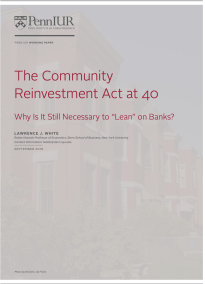Key Message
The CRA continues to be crucial because significant disparities in access to credit and financial services persist, particularly in minority and LMI communities. Despite progress, these areas still face challenges in obtaining fair and affordable credit. The CRA's role in encouraging banks to provide loans and financial services in underserved areas remains vital. By mandating that banks meet the credit needs of the communities they serve, the CRA helps to address market failures and ensure that economic opportunities are more evenly distributed.
The ongoing necessity of the CRA can be attributed to several factors. First, discrimination in lending practices, although reduced, has not been entirely eradicated. Second, banks may not exert sufficient effort to assess the creditworthiness of potential borrowers in LMI communities, resulting in missed opportunities for profitable lending. Third, market power and lack of competition in certain areas can lead to higher loan costs and reduced access to credit for LMI residents. Additionally, the financial sophistication of borrowers varies, with less sophisticated borrowers often facing higher costs and fees.
The CRA's framework needs to be modernized to reflect changes in the banking industry and ensure its continued relevance. Expanding the geographical scope of CRA assessments to include the activities of non-bank financial institutions and fintech companies is essential. Enhancing data collection and transparency will improve the evaluation of CRA performance. Furthermore, balancing quantitative and qualitative metrics will provide a more comprehensive assessment of banks' community reinvestment activities.


